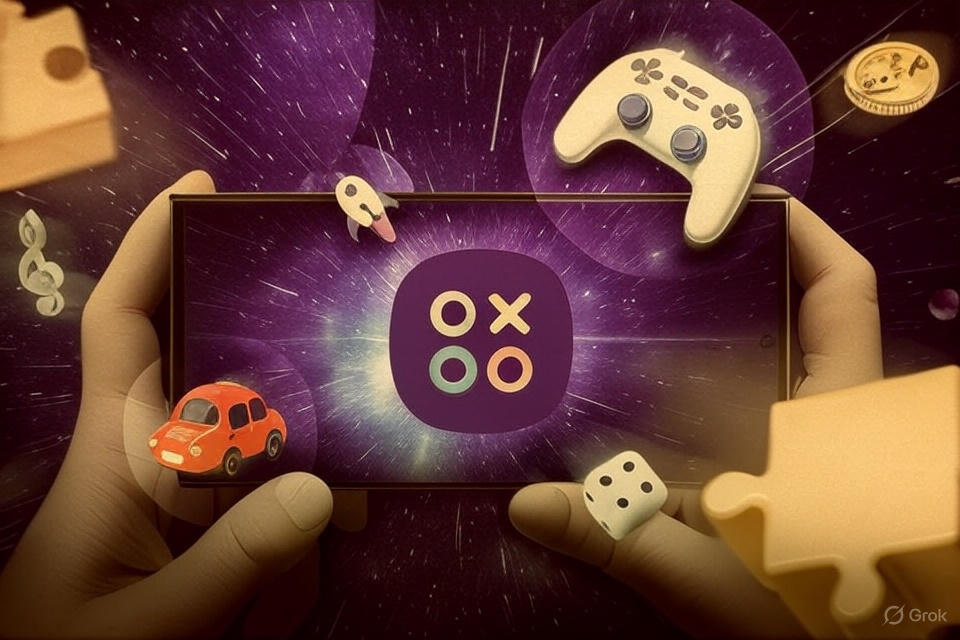IGN Report Reveals U.S. Gamers Buying Habits in 2025
Introduction
On October 8, 2025, IGN (@IGN) shared a tweet highlighting a significant change in U.S. gamers’ purchasing behavior. Citing Circana, a leading market research firm, IGN noted that over 60% of American gamers now purchase two or fewer games per year. This insight sheds light on how free-to-play games, economic factors, and subscription models are reshaping the gaming landscape.
According to Circana, over 60% of gamers in the United States now buy two or fewer games per year as more shift focus to free-to-play titles like Fortnite.
— IGN (@IGN) October 8, 2025
For more from the report: https://t.co/bPVl9lnHFk pic.twitter.com/ydoaApe3MW
Key Highlights from IGN’s Tweet
- Shift in Buying Patterns: Most gamers are purchasing fewer new games, signaling a decline in traditional game ownership.
- Free-to-Play Popularity: Titles like Fortnite dominate, emphasizing accessibility and in-game monetization.
- Economic Influence: Rising AAA game prices ($70-$80) and inflation may deter full-priced purchases.
What the Image in IGN’s Tweet Revealed
The tweet included a visually striking image featuring iconic characters:
- Fortnite banana-suit character – representing free-to-play dominance
- Donkey Kong – classic gaming icon
- Call of Duty soldier – popular paid title
- Destiny-style futuristic warrior – modern gaming variety
- Final Fantasy character – RPG diversity
- Doom Eternal antagonist – action game appeal
The overlay highlighted: “NEW DATA SHOWS MORE THAN HALF OF U.S. GAMERS BUY TWO OR FEWER GAMES OR FEWER PER YEAR”
Why This Trend Matters
1. Economic Pressures
High game prices and limited disposable income have shifted player priorities toward value-focused gaming, free-to-play titles, and subscription services like Xbox Game Pass and PlayStation Plus.
2. Rise of Free-to-Play Games
Games like Fortnite and Apex Legends attract massive player bases without upfront costs, monetizing via microtransactions and in-game purchases.
3. Subscription Services Influence
Access-based models allow gamers to play dozens of titles without buying each individually, reducing the need for multiple full-price game purchases.
Community Reactions
- @AnnazPlays joked about unplayed games piling up
- @VileMK2 highlighted the deterrent of $70-$80 prices
- @drinkoatmilk_ noted personal exceptions with 12–15 annual purchases, likely due to subscriptions
Broader Industry Implications
- Traditional AAA developers may face challenges with fewer full-price game sales
- Free-to-play and subscription models will likely dominate future revenue streams
- Gamers’ habits are shifting toward value and accessibility, reflecting larger economic trends
FAQs
Q1: Why are U.S. gamers buying fewer games?
A1: Rising game prices, inflation, and the popularity of free-to-play titles and subscription services contribute to this trend.
Q2: What role do free-to-play games play?
A2: They allow gamers to enjoy content without upfront costs while generating revenue via in-game purchases.
Q3: How does this affect traditional game developers?
A3: Fewer full-price purchases may push developers to adopt subscription models, in-game monetization, or hybrid approaches.
Q4: Which games are most affected?
A4: AAA titles priced $70–$80 are most impacted, whereas free-to-play games like Fortnite continue to see growth.
Conclusion
IGN’s tweet is more than a snapshot; it reflects a fundamental transformation in U.S. gaming culture. Over 60% of gamers buying two or fewer games annually highlights the influence of economic constraints, free-to-play dominance, and subscription models. For developers, this is a call to innovate in monetization strategies. For gamers, it represents a pragmatic approach toward accessible entertainment. As the industry evolves, these trends underscore a shift from sheer game ownership to a value-driven, experience-focused gaming ecosystem.


0 comments